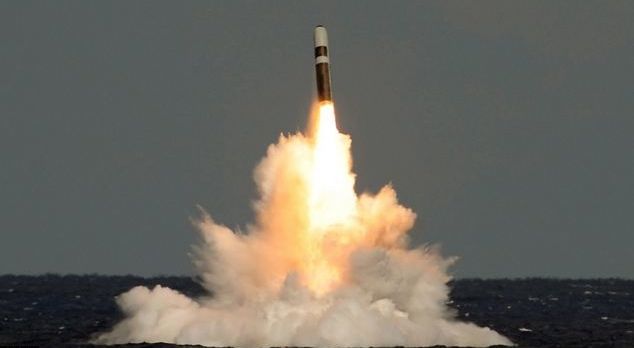A Second Chance on Nuclear Modernization
http://breakingdefense.com/2014/08/a-second-chance-on-nuclear-modernization/
 The DC debate on the Navy’s new nuclear missile submarines has been about how we can possibly pay for them. In this op-ed, however, frequent Breaking Defense contributor Bob Butterworth takes a step back to look at a much bigger picture. The Navy’s recent admission that it can’t afford the Ohio Replacement Program (ORP) is an opportunity, he argues, a moment of clarity that should force the administration to rethink its plan for the future of the entire nuclear enterprise. In an increasingly dangerous world, he says, he still need nukes, but the world is dangerous in a different way than the Cold War and requires a different kind of thinking about nuclear weapons. — Sydney Freedberg, deputy editor.
The DC debate on the Navy’s new nuclear missile submarines has been about how we can possibly pay for them. In this op-ed, however, frequent Breaking Defense contributor Bob Butterworth takes a step back to look at a much bigger picture. The Navy’s recent admission that it can’t afford the Ohio Replacement Program (ORP) is an opportunity, he argues, a moment of clarity that should force the administration to rethink its plan for the future of the entire nuclear enterprise. In an increasingly dangerous world, he says, he still need nukes, but the world is dangerous in a different way than the Cold War and requires a different kind of thinking about nuclear weapons. — Sydney Freedberg, deputy editor.
A Second Chance on Nuclear Modernization
By Bob Butterworth on August 04, 2014 at 1:41 PM
Thanks to the Navy, we now have a chance to build a force posture better suited to meeting our future nuclear challenges.
To recap: In 2009 the then-new Obama Administration prepared a Nuclear Posture Review that set out to conclude the country would be safe with fewer deployed nuclear forces. The following year the Administration presented the New START agreement for Senate advice and consent, soon coupling it with a plan to modernize the classic triad by building new ICBMs, new submarines to launch SLBMs, and new nuclear-capable bombers, all to be fielded during the early 2030s and 2040s. New SLBMs for the new “boomers” would then follow. The next year brought a reduced version of this plan, delaying the start of the submarine program by two years and indefinitely deferring the work to make the new bombers capable of delivering nuclear bombs. This year brought a three-year delay in beginning work on a new air-launched cruise missile.
All this was expected to be very costly, as the delays and deferrals suggest. The Navy’s effort alone was likely to run almost to $100 billion and to take up nearly half the shipbuilding program for several years. And, sure enough, the Navy told Congress in July that the plan to build new subs is “not supportable” without giving the service a lot more money.
And so there may now be a chance to reconsider the whole modernization scheme. With or without delays, the Administration’s plan would simply recapitalize the force posture that had emerged from inter-service competition half a century ago. Is that the best achievable posture for meeting the threats and challenges of the next fifty years? Maybe, but there was not much strategic analysis offered to justify it, and the arguments offered to support it have a distinct superpower-vs.-superpower Cold War flavor. It is hard to see the plan as more than a replay of bureaucratic politics, in which the Air Force and the Navy each surrendered some deployed missiles and outside “blue ribbon” panels reported they could not agree on a better alternative.
